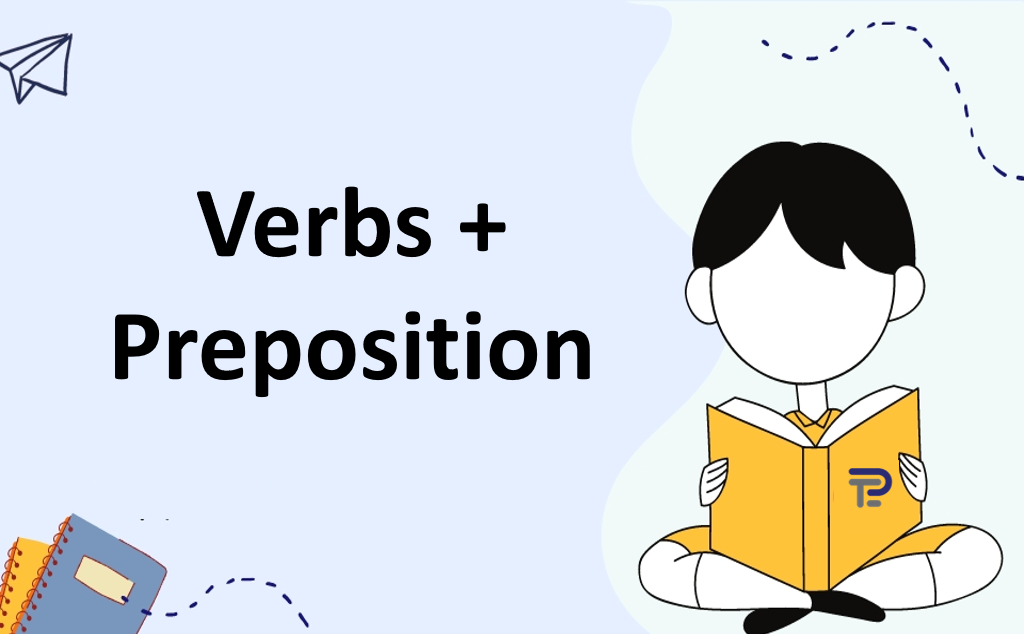Understanding Verb + Preposition Combinations
A verb-preposition combination is a pair in which a verb is immediately followed by a preposition to create a phrase whose specific and sometimes idiomatic meaning is conveyed. Such combinations very often convey meanings different from the separate definitions of the verb or preposition alone. It is important to master them for clear, correct, and natural communication in English.
These strong combinations not only contribute to communicating actions and thoughts with greater accuracy but also greatly enhance fluency in language. They help prevent confusion and misunderstanding, particularly in educational, business, or daily life settings. If you want to master grammar, a firm understanding of verb-preposition combinations is essential.
What is a Verb-Preposition Combination?
A verb-preposition combination (also referred to as a prepositional verb) is a verb and a preposition combined to produce a particular meaning. Such combinations are transitive verbs, implying that they are usually followed by an object in a sentence. When properly used, they produce expressions that are more specific and contextually fitting.
Following are some examples to show how verb-preposition combinations are applied in actual sentences.

In the above example sentences, words like conveyed, associated, relate and agree are verbs which are then followed by prepositions to, and with. Combining both verbs and prepositions changes the meaning of the sentence.
For Instance: Agree with" and "Agree to" may seem similar, but they are used in different contexts. Here's a simple breakdown:
Agree with
Used when you're expressing that you share the same opinion as someone else or accept their idea.
Structure:
agree with + person/idea/opinion
Examples:
- I agree with you on this issue.
- She agreed with his argument.
- We agree with the decision.
Agree to
Used when you are giving permission or consent to a plan, proposal, or suggestion.
Structure:
agree to + noun/plan/proposal
Examples:
- He agreed to the terms and conditions.
- They agreed to the new schedule.
- She agreed to join the project.
List of Some Common Verbs Used Prepositions
The following table comprises the different verbs used with the frequent prepositions:

Why verb–preposition collocations are important?
Verb–preposition collocations should be learned for several reasons:
1. Minimize Hesitation: Familiarity with frequent collocations makes writing and speaking simple students make not require to stop and decide on the appropriate preposition.
2. Enhance Listening Comprehension: Because collocations are frequent, awareness of them will make English speakers easier for students to comprehend.
3. Effective communication: Collocations add meaning and accuracy to words. The ability to know which preposition to use in a specific context helps speakers convey what they mean.
4. Prevent learners from making errors: English learners tend to err by leaving out prepositions or using the wrong ones, and this can alter or misrepresent the meaning of their sentences. Learning collocations will assist in minimizing the errors learners make.
Tips for students
It is not a question of memorizing long lists to master collocations. Rather, there are some strategies that can assist in making these expressions sound more natural and easier to learn.
1. Learn typical verb–preposition collocations in context. One of the most effective methods of learning collocations is to observe them being used in everyday contexts. Reading newspaper, magazines or journals, viewing TV programs, or even listening to podcasts may expose you to these collocations in use.
2. Construct examples. The use of collocations in sentences serves to cement their meaning. Construct sentences such as "I agree with your opinion" or "I'm waiting for your reply" while you learn.
3. Practice speaking and writing using verb–preposition collocations. In order to keep what you've learned, practice using collocations in your daily speech and writing. Use them in spoken discourse, journal entries, emails, and texts.
4. Learn verb–preposition collocations as fixed expressions. Collocations are fixed expressions, so it's useful to learn the two parts together as a unit. Rather than memorize “depend” alone, concentrate on “depend on” as one idea that equals “to rely on.

